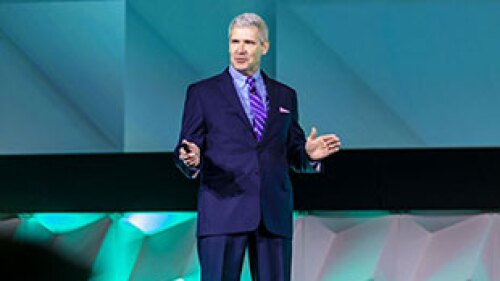“The takeaway quote of this panel is: ‘We don’t need any more office space,’ ” Those were the words of Chris Macke, principal at Chicago-based General Equity Real Estate. Macke was a presenter at the session titled “Rethinking the Office Market” at ULI’s 2011 Fall Meeting in Los Angeles. As it turned out, his quote was a summary of not just his presentation, but also the comments of the panel. While his conclusion may seem dire, it was backed up not only by him and the panel, but also by larger trends such as a changing corporate climate and a stagnant economic recovery that are having profound impacts on the office market.
While gross domestic product has recovered, the United States has regained only 14 percent of the jobs it shed during the Great Recession. This, more than any other factor, is negatively affecting office rents and vacancies across the country, as very few markets are thriving. (Though some locations, often central business districts, are improving, many markets, especially suburban ones, continue to languish.) As well, some sectors—such as technology, media, and some health care–related industries—are doing well, while others are contracting, including government offices and banking.
The panelists generally agreed that understanding not only market sector fluctuations but also changes to the workplace is important to be successful in office development, investment, and leasing going forward. Even if there isn’t demand for new net square footage, as needs for the type, layout, and location of office space change, opportunities for developers and investors are emerging.
“Understanding the client is key at this time,” explained panelist Joaquin de Monet, president and CEO of Los Angeles–based Arden Realty, Inc. “What do tenants want? We survey all our tenants, and worry about retention.” Phil Mahoney, executive vice president at Cornish & Carey Commercial Newmark Knight Frank, echoed de Monet’s sentiments, indicating cost is secondary to value right now. “It’s more about my competitors and how I can recruit and keep the best employees,” Mahoney said, describing the point of view of employers and office tenants. “Apple and Google are less concerned about the debt crisis than their next product release.” He emphasized that the right office and creative work environment is an important aspect of the competition among these firms to recruit the best and brightest.
De Monet indicated that the key now for tenants is value, loyalty, and going beyond the commodity of office space with basic services and adding something of value to tenants. He stressed differentiators, such as office design, access to other resources, and sustainability. While the panelists agreed that Leadership in Energy and Environmental Design (LEED) has become much more commonplace in the past five years and now is a requirement for a number of office users, understanding the differentiators is important. “Work used to be what you do, not where you do it,” explained Ed Cook of California-headquartered McCarthy Cook. Now, he said, the reverse is true. As a result, office environments must be exciting, collaborative, productive, and located near transit and where people want to live, according to John Kilroy, president and CEO of Kilroy Realty Corp., based in Los Angeles. “This is increasingly true among [generation Y], the fastest-growing portion of the workforce,” he noted.
De Monet noted that office space requirements have shrunk to just 105 square feet (9.8 sq m) per employee in some places (see Urban Land’s August 2011 article:
http://urbanland.uli.org/Articles/2011/August/NewbergOffice). Part of this increased office density is attributable to open floor plans, which feature fewer individual offices and cubicles and a more collaborative environment where employees share workspaces, sometimes even sitting on benches at large communal tables. Furthermore, this shift isn’t restricted to just the tech industry, said Phil Belling, managing principal at LBA Realty, who noted that the American Automobile Association wanted an open, collaborative floor plan in their new office space. Allocating less space per employee also has to do with economics, as companies have tried to cut expenses since the onset of the recession.
While the headline-grabbing changes to office design include young, hip Gen Y workers collaborating at tables and on beanbag chairs rather than at conventional desks, less sexy details cannot be overlooked. For instance, increased office density requires the inclusion of more elevators and restrooms for the average floor plate, changes to the fire code to allow for more people per floor and building, as well as potentially more parking spaces per 1,000 square feet (93 sq m) of space, at least in locations not served by mass transit.
So, while it may be true that no new net office space is needed at present, there will certainly be development opportunities as companies endeavor to stay competitive and a changing workforce demands different designs, locations, and amenities. Mahoney agreed, saying real estate is like politics. “It’s all local,” he opined. “Some places could accept more development; others should wait.” Thus, office development will continue to occur in key locations, while other areas will continue to languish in terms of occupancy, much less new development. With all the pressures of providing green and efficient offices with new layouts, as well as minimal net demand for new space, office developers and investors have their work cut out for them in the coming years.


